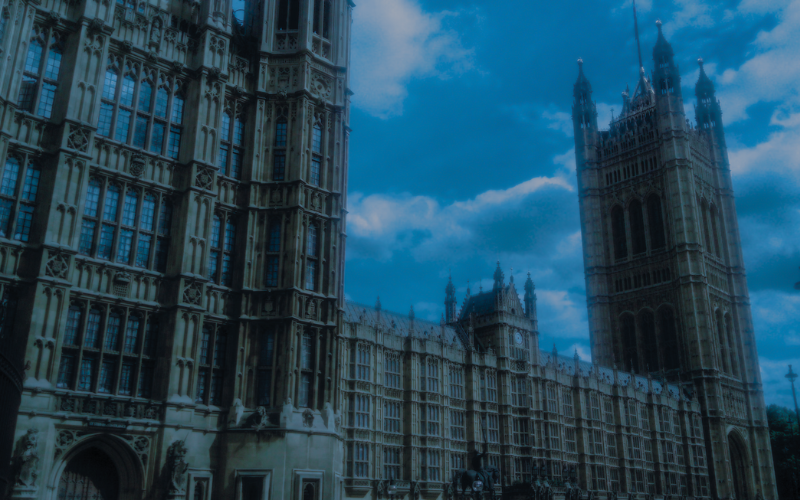The highlight of the yearly calendar, National Cheese Toastie Day, was arguably overshadowed by the Chancellor, Rishi Sunak’s autumn budget and spending review. This was in no small part due to the importance of this particular review; whereas in 2020 the focus was narrowed to one year in order to address the Covid-19 pandemic, this budget presented the government’s spending priorities for the next three years.
Following historically high levels of government borrowing yet a better-than-expected economic recovery, this was a high-spending budget with significant levels of investment in public services – a rise in overall spending totalling £150 billion across Whitehall departments during this Parliament.
We have gone through the spending review document and picked out some of the key tech themes, analysing what the government plans to spend on key departments and digital initiatives and the impact this might have.
VIRTUALLY EVERY GOVERNMENT DEPARTMENT HAS BEEN GIVEN MONEY FOR DIGITAL INNOVATION
Having gone over the fine print, we’re struck by the substantial financial commitments towards digital innovation: the Department of Health & Social Care (DHSC) has been given an additional £2.1 billion to support innovative use of technology (unsurprising given the importance of connected digital systems to government’s pandemic response); the Department for Business, Energy & Industrial Strategy (BEIS) is getting £4.71 billion to drive high-tech innovation; the Department for Culture, Media & Sport (DCMS) is receiving a £160 million investment to support the UK’s tech sector, particularly new industries; and some of the £2.4 billion settlement to the Law Officer’s Department is expected to cover investment into digital innovation by the CPS. Bear in mind that these are just some of the highlights from the Budget document – virtually every government department has been allocated money to support digital innovation initiatives.
One interesting point to raise is that HM Revenue & Customs (HMRC) has been provided with an additional £227 million to improve the way it procures IT services, with the stated intention of “creating more opportunities for smaller businesses to compete for contracts and delivering greater technological innovation”. Smaller technology businesses have long proven themselves to be more specialist, agile and experimental than larger competitors, and we believe that this move will allow government departments to benefit from more niche innovations in the tech space to deliver better outcomes for citizens.
This budget also signals the beginning of digital transformation journeys for numerous governmental departments: the Department for Levelling Up, Housing & Communities (DLUHC) is to receive £65 million to improve the planning regime through a new digital system, whereas the Department for International Trade (DIT) is getting £45 million for the digital transformation of its export support services. These departments (especially DLUHC) have a real opportunity to start fresh and enact bold, innovative thinking, largely unencumbered by legacy systems and processes. Their initiatives could become standard-bearers for digital transformation in the public sector.
CONTINUED IT MODERNISATION TO DELIVER “WORLD CLASS PUBLIC SERVICES”
Several times during his speech to the Commons, Sunak talked about “world-class public services”. And before the Spending Review was even delivered, the Treasury asked Whitehall departments to find 5% worth of efficiency savings. In many ways, this budget focuses on investment to improve the efficiency with which governmental departments provide services and deliver positive outcomes.
Over the last 18 months, the coronavirus pandemic has forced citizens and government departments alike to embrace digital technology. Many who were previously resistant have now become familiar, even comfortable, with interacting with the state through online systems. Following such widespread digital adoption, it’s perhaps no surprise that many of the government’s spending commitments are towards completing and delivering existing digital modernisation programmes.
HMRC will receive £468 million over the next three years to support the continued modernisation and digitisation of its IT systems, including £136 million to deliver the Single Customer Record and Account, which is expected to improve the quality of digital services offered to citizens. The Valuation Office Agency (VOA) is also receiving more than £500 million over the next three years to “upgrade digital capabilities and ensure a high-quality service for taxpayers.”
Elsewhere, the Ministry of Justice (MoJ) is receiving an additional £200 million to complete the court reform programme to deliver a modern, efficient justice system, the Department of Work & Pensions (DWP) is getting £2.6 billion to transform how service users interact with the welfare system, and the Department for Transport will receive £360 million to modernise ticketing and retail systems.
There are few specifics about how the Cabinet Office’s allocation should be spent on digital, with no specific funding for the Central Digital and Data Office (CDDO), but it mentions funding should be provided to progress development of the “One Login” system (to allow citizens to access all government services through a single portal) and allocated to Government Digital Service to maintain and develop information services such as GOV.UK.
In this pursuit of more modern, efficient delivery of public services, we expect the decommissioning of legacy IT systems will be a continued focus. Cloud offerings will provide more future-proofed and scalable infrastructure for governmental departments than traditional systems that are more costly to support and difficult to scale. And, with so many government bodies in the process of modernising and improving digital services, there will be opportunities for cross-departmental learnings that will benefit everyone. The ability to share best practices and solutions to common challenges will be a crucial means of achieving greater efficiencies and lowering the overall cost of these programmes.
CAN TECH ADDRESS SOME OF THE CHALLENGES OF POST-COVID RECOVERY?
While this is certainly a forward-looking Budget, one anticipating what a post-Covid world looks like, it was expected that the Treasury would need to fund efforts to deal with the ongoing fallout of the pandemic. To that end, the media had been pre-briefed that the NHS would receive an extra £5.9 billion to tackle the backlog of patients awaiting treatment and the spending review also confirms that the MoJ will get an extra £2.2 billion for courts, prisons, and probation services, including funding to clear the court's backlog.
They will be by no means the only government departments facing a backlog because of the pandemic. We expect that many public sector organisations will need to dedicate some of their settlements towards this issue. To make the best use of the funding, departments need to be innovative – it’s unlikely that they will be able to catch up by simply reverting to pre-Covid ways of working. Clever use of Robotic Process Automation (RPA) and Intelligent Automation could minimise manual work and free up staff to do more high-value tasks. In the NHS, for example, RPA could power self-service systems that allow patients to book vaccinations or reorganise appointments. And, of course, these tools could work alongside some of the approaches that we know have worked during Covid, such as video appointments, to ease the workloads of already stretched frontline staff.
If you want to understand more about this, we’d recommend reading techUK’s recommendations to support the adoption and scaling of Intelligent Automation in Central Government.
DATA IS BECOMING A BIGGER PRIORITY
It is encouraging to see that the Autumn Budget includes several significant commitments towards developing the UK’s data capabilities. Part of a £50 million allocation to DCMS includes a doubling of AI and data scholarships, as well as funding for an agenda on data policy. Additionally, the UK Statistics Authority will receive £294 million for the ongoing delivery of high-quality core statistics (including a new Labour Market Survey) and the delivery of an Integrated Data Service to support better cross-departmental data sharing.
Data is going to be an integral part of the future UK economy and how government departments deliver better services and outcomes for citizens. But the funding commitments outlined above indicate one of the key challenges data presents to any organisation. Generating data is in many ways the easy part; making that data available to be more easily shared, interpreted, and used to inform decisions requires technologies and skillsets that many organisations do not yet possess. Plugging this gap in people, processes and technology will be a key hurdle for many governmental departments to overcome over the next three years.
It’s an interesting challenge, especially because data is the key aspect of some of the less headline-grabbing aspects of the budget. For example, the Department for Environment, Food & Rural Affairs (DEFRA) will receive £5.2 billion towards the Flood and Coastal Erosion Risk Management programme - a hugely data-driven project, drawing on a variety of complex data sources (geospatial, meteorological, and more) to better predict, and thus reduce the likelihood and impact of, flooding.
CYBER SECURITY ON BOTH A NATIONAL AND LOCAL LEVEL
Cyber security emerges as a major digital priority of this budget, with the government set to invest £2.6 billion into cyber and legacy IT over the next three years, including a £114 million increase in funding for the National Cyber Security Programme. Significant sums are being allocated to individual departments for purposes of cyber security: the HMRC is receiving £468 million to, among other things, increase its ability to defend against cyberattacks, and the Foreign, Commonwealth and Development Office (FCDO) will get £100 million to support improvements to its cyber security infrastructure.
Interestingly, local government is getting £27.8 million of extra cash to address cyber security. We believe that there are opportunities here for local governmental bodies to benefit from knowledge sharing. What one local authority achieves can largely be applied to others of a similar nature – finding a way to share these learnings and “template” cyber security solutions across local government will reduce waste and increase the speed of implementation.
TAKING A LONG-TERM APPROACH TO DIGITAL INNOVATION
Having gone through this budget in detail, it’s encouraging to see the amount of investment in technology, especially the commitments to updating, modernising and improving the digital infrastructure through which government departments deliver public services.
However, any programme of modernisation must be careful and considered. Without adequate futureproofing measures, today’s fully modernised system is tomorrow’s legacy IT. When updating and upgrading existing systems, governmental bodies should always be thinking about how to accommodate possible future use cases and technologies. Otherwise, budgets down the line will be swallowed up by further modernisation programmes to remediate tech debt being built up today.
But this is why it’s great to see such a focus on innovation in this year’s budget – technology is constantly evolving and maturing, and there needs to be a long-term plan to accommodate that fact. Significant investment now in how to drive digital innovation will mean that government departments are able to fully realise the benefits for citizens in three years’ time.
The UK ranked second in last year's OECD Digital Government Index, and this spending review appears to show the government is serious about remaining a world leader in this space. The goals are ambitious but the government is certainly putting its money where its mouth is.
Published
April 29, 2024Reading time
6 minutesRelated posts






